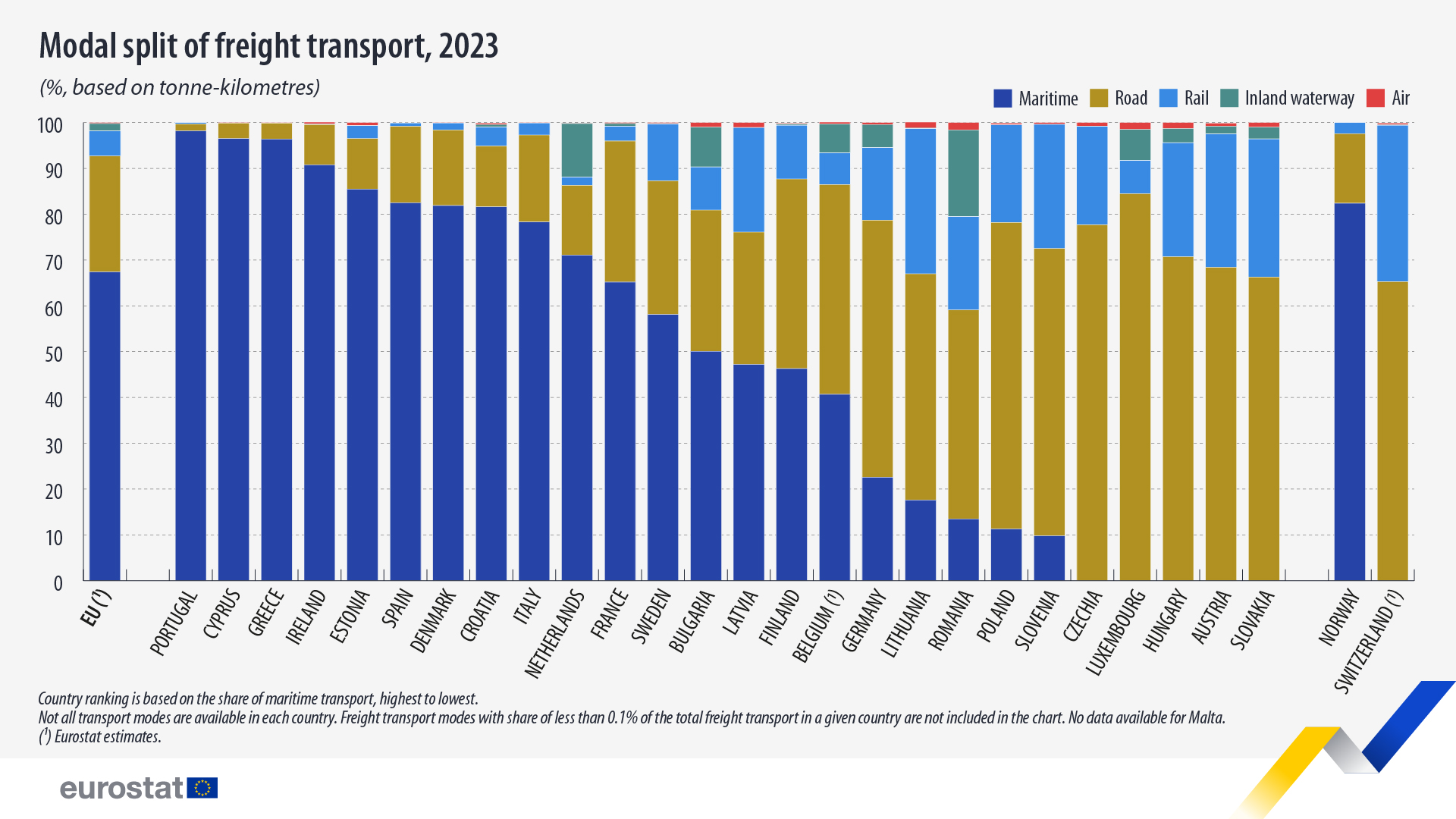
In 2023, roughly two-thirds (67.4%) of all freight transported within the EU territory was by sea when considering the amount of goods and the travel distance (tonne-kilometres). Road freight transport accounted for 25.3% of all freight, while rail transport represented 5.5%. Inland waterways accounted for 1.6% of freight transport and the share of air transport was 0.2%.
Compared with 2013, road transport was the only mode with an increasing share, rising by 2.8 percentage points (pp) over the 10 year period. At the same time, the share of maritime transport decreased by 2.0 pp, inland waterways by 0.6 pp and rail transport by 0.2 pp.
This information comes from data on the modal split of freight transport published by Eurostat today. This article presents a handful of findings from the more detailed Statistics Explained article on freight transport – modal split.

Source dataset: tran_hv_ms_frmod
For 15 out of the 22 EU countries with a coastline, maritime was the main mode of freight transport and in 10 countries it accounted for more than 70% of freight transport. More than 95% of freight was transported by sea in Portugal (98.2%), Cyprus (96.5%) and Greece (96.4%).
Meanwhile, more than 70% of all freight was transported on roads in Luxembourg (84.5%), Czechia (77.7%) and Hungary (70.7%).

Source dataset: tran_hv_ms_frmod
High shares of rail freight transport were recorded in Lithuania (31.7%), Slovakia (30.1%), Austria (29.1%) and Slovenia (27.1%).
Romania recorded the highest share of goods transported along its inland waterways (18.9%), followed by the Netherlands (11.7%) and Bulgaria (8.7%).
Air transport made up at least 1% of all freight transport in only 7 countries, with Romania (1.6%), Luxembourg (1.5%), Hungary and Lithuania (1.3% each) recording the highest shares.
Source: Eurostat, https://ec.europa.eu/eurostat/product?code=ddn-20250416-1